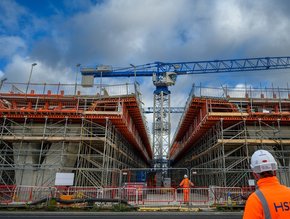SE Asian Integrated FM market to generated $2.41bn by 2025

A recent analysis by Frost & Sullivan on Southeast Asian Integrated Facilities Management (IFM) has found that the IFM market in on the upswing in the region due to an increased demand for energy efficiency, regulatory support, narrowing expectation gaps between service providers and end-users, as well as the emergence of specialised FM service providers.
As a result, the market is expected to generate $2.41 billion in revenue by 2025, a sizeable 5.8% CAGR increase from the $1.82 billion registered in 2020. In addition, the increased deployment of technologies due to COVID-19 and environmentally conscious consumers demanding the adoption of energy-efficient methods will further expedite market progress, the report said.
It also highlighted that Singapore and Malaysia are expected to observe the highest adoption rates in the region, and that IMF adoption rates would vary across different SE Asian countries.
"Changes in the mindset across all stakeholders, including service providers, clients, and occupiers, are significantly impacting facilities management (FM), whether in terms of a value proposition or service requirements," said Janice Wung, Program Manager, Industrial Practice, Frost & Sullivan. "Innovation through the incorporation of technology-supported propositions or enabling technologies is key to the future of FM."
"IFM opportunities can involve various building-related components, and these can range from energy to visitor experience. Due to this, service providers must identify the need to act swiftly through collaborations/partnerships with suitable technology or platform providers or firms that possess strong technical or niche capabilities.”
The report analysed commercial, institutional, public/infrastructure, and industrial market segments, among others. In these market segments, industrial is expected to witness the highest CAGR at 7%, followed by institutional at 5.9% during 2020-2025.
Furthermore, the increasing demand for energy efficiency and sustainability will create lucrative prospects for market participants, such as:
- Workplace management to optimise occupier experience:
Service providers can look for opportunities in existing engagements by integrating workplace management into core FM/IFM services.
- Data analytics to improve maintenance and costs:
Acknowledging the growing demand for data analytics will allow service providers to drive awareness.
- Energy management to optimize cost and comply with building standards:
As technology and innovation continue to be the core of energy management solutions, service providers should incorporate technologies such as real-time reporting to optimize the solutions.
- Market collaboration and consolidation to leverage knowledge and experience:
Vendors should identify areas ripe for expansion supported by partnerships/collaborations with specialized or technical firms.






